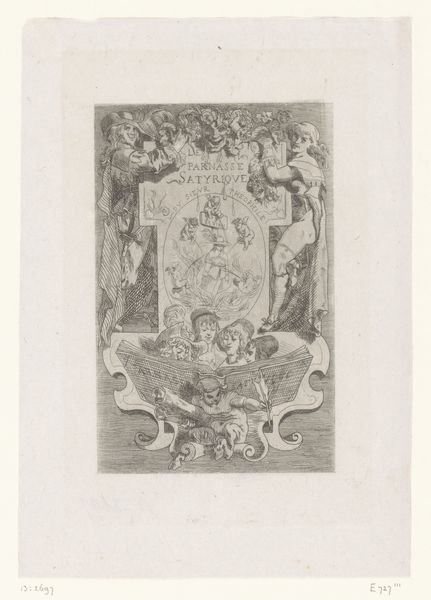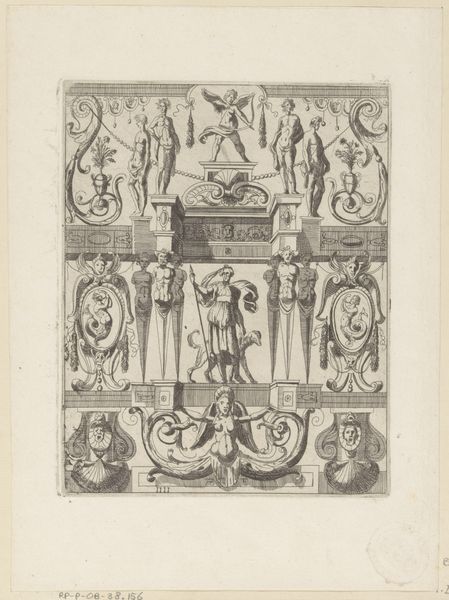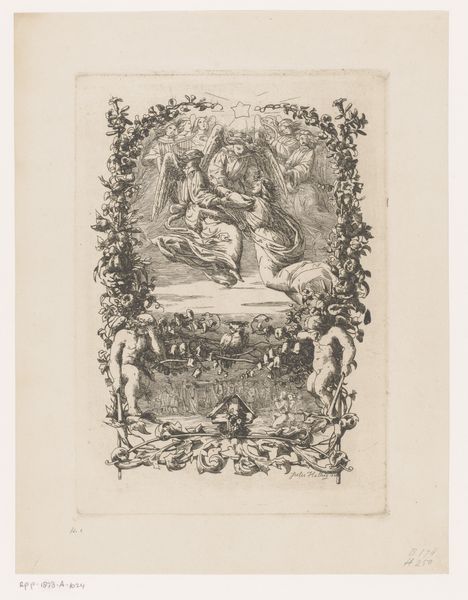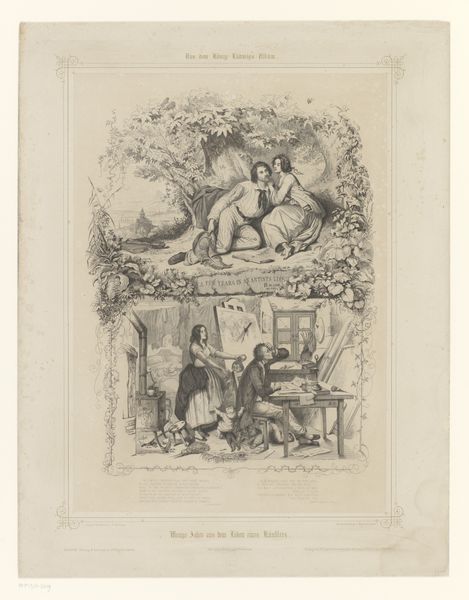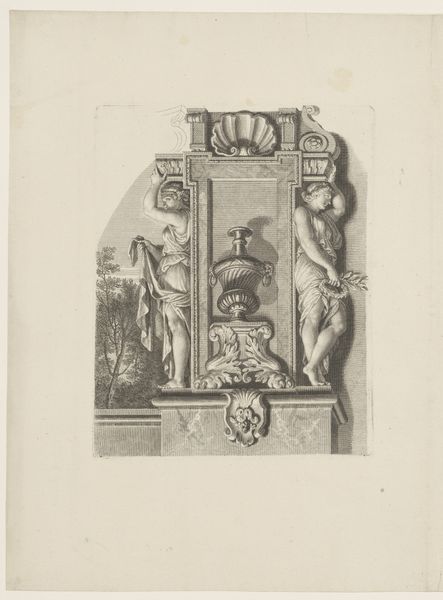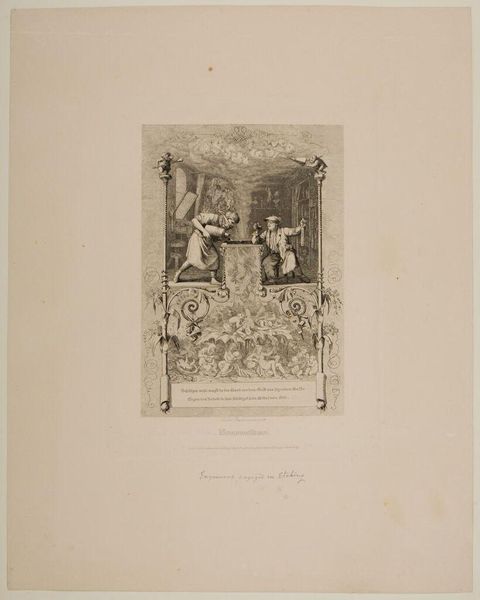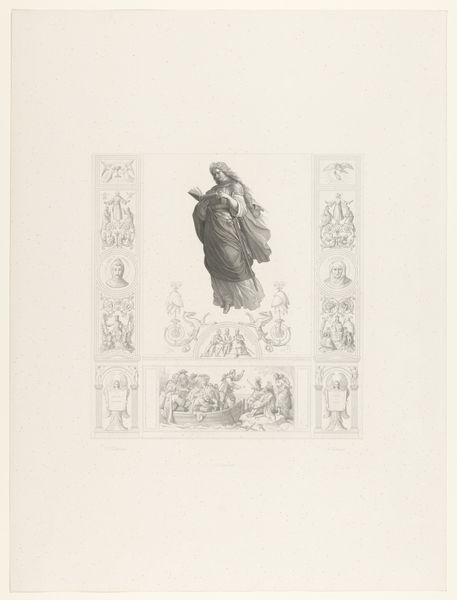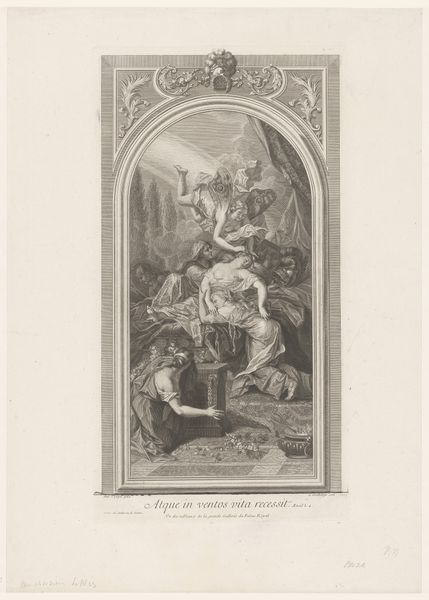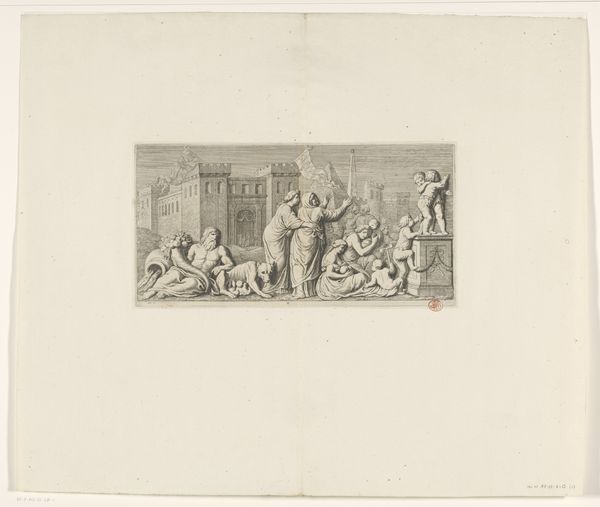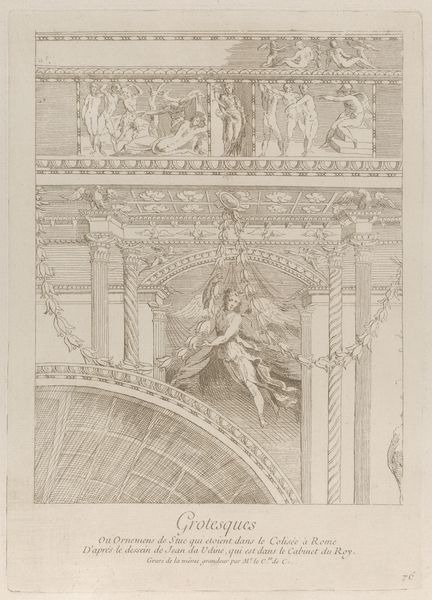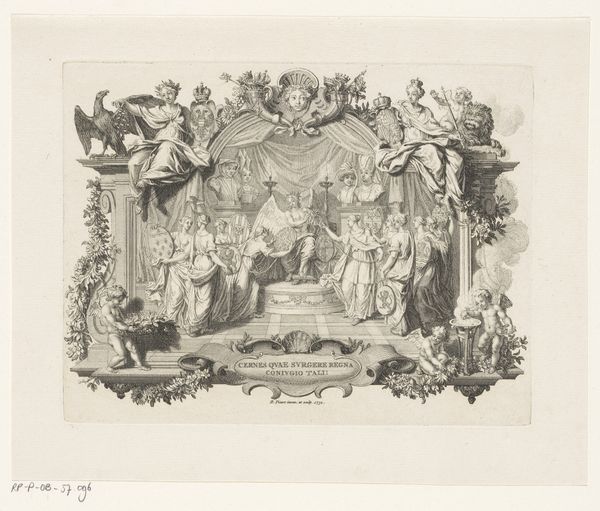
print, etching, paper, engraving
#
allegory
# print
#
etching
#
etching
#
figuration
#
paper
#
line
#
history-painting
#
engraving
Dimensions: height 493 mm, width 420 mm
Copyright: Rijks Museum: Open Domain
Curator: This artwork, attributed to Gustav Seidel, is entitled "Religieuze allegorie," and judging by the style and paper, was likely created sometime between 1829 and 1901. It’s an etching, a print on paper employing a line technique. Editor: It’s strikingly ethereal! The figures almost float on the page. The grayscale emphasizes the delicacy of the forms, like a memory fading into the past. Curator: Exactly! The artist presents a symbolic panorama using imagery rife with allegorical weight. Observe the figure at the apex, seemingly ascending with the help of angels, a scene echoed in miniature in the pediment-like area. The bottom section displays what appears to be some sort of royal or religious procession. Editor: And there's that very restrained color palette. The lack of color almost amplifies the solemnity, like a historical document recording events of great cultural consequence. What social context might have shaped this piece, do you think? Curator: Given its probable timeframe, it likely reflects the renewed interest in historical and religious themes prevalent in 19th-century European art, especially within academic circles eager to showcase grand narratives of history and belief. Its symbolism might be specific to certain religious doctrines that were very contested and debated at the time. Editor: Yes, that academic sensibility really shines through! The work has that almost neoclassical composure—the balanced arrangement, the idealized human forms. It almost feels like a conscious echo of past artistic styles in the service of defining the religious climate of that era. Curator: Agreed. Each element is carefully constructed to represent higher concepts, prompting viewers to consider the relationship between temporal and spiritual power through these very specific symbolic shorthands of its time. The arrangement and symbols almost act as memory triggers for historical reflection. Editor: I leave contemplating how institutions – be they religious, political, or artistic – use imagery to shape belief, to cultivate a cultural memory. And Seidel’s work seems so indicative of that practice! Curator: For me, it's fascinating to unravel these visual emblems, realizing how artists embed culturally loaded concepts within their artwork that carry echoes across generations. These aren’t just pretty pictures.
Comments
No comments
Be the first to comment and join the conversation on the ultimate creative platform.
